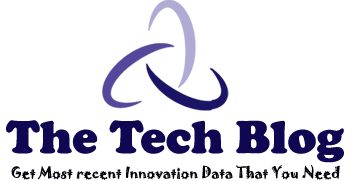5 Ways to Eliminate DevOps Monitoring Challenges
With its set of compelling benefits, DevOps is one of the go-to standards for software development and implementation. Some of the DevOps benefits include faster delivery time, better customer experience, enhanced team collaboration, continuous release and deployment, early defect detection, and an innovative mindset.
Table of Contents
Why is DevOps Monitoring Important?
Monitoring DevOps services offer relevant insights to organizations and help them have a clear view of every application stack component. An embedded monitoring system into the DevOps lifecycle enables better monitoring of production with the help of DevOps metrics by tracking business KPIs (Key Performance indicators) more efficiently.
Monitoring systems use identified business requirements to deliver new functionalities besides enabling continuous learning and feedback across product managers and stakeholders. It helps in saving time during bug testing and accelerates communication between database development and operational teams. Further, it results in fewer bad customer experiences as it takes place in non-production environments.
What are DevOps Service Monitoring Challenges?
Given that DevOps Services monitoring is vital for businesses, most organizations find it significantly challenging. There is a range of challenges faced by DevOps monitoring.
Rapid Monitoring
With DevOps, all users automatically receive new products and updates almost weekly, unlike older days. It demands a dramatic enhancement in the speed and depth of monitoring.
Limited Visibility
One of the primary reasons is that the development and IT operations teams have entirely different success ideas and lack visibility into the whole environment. Further, DevOps characterizes rapid changes and deployments, while many conventional management tools cannot adapt to these, leading to blind spots. Together, it results in delayed resolution time.
Labor Intensive Process Management
Heavy manual processes are difficult to manage and face challenges to stay up-to-date. Such techniques result in higher costs and deviate members from focusing on the business and application needs.
Loosely Coupled Tools
Often, the development and operations teams use different tools to monitor their environments. Using more tools in silos can result in increased training and admin burdens and communication issues.
What to Measure?
Some organizations face challenges in establishing the right DevOps Metrics for their projects. Besides traditional performance indicators like data throughput, CPU usage, and storage consumption, DevOps practitioners are also considering esoteric elements such as development lead times, customer satisfaction, and mean time to detection and recovery. Every organization has a unique monitoring data environment depending on the objectives and goals of its application load.
In the absence of the correct data that gives insights into how things are performing, it’s challenging to avoid over-saturating infrastructure or slowing down response time and adds to the cost.
How to Eliminate DevOps Monitoring Challenges?
DevOps is designed to help businesses offer rapid and quality deliveries, cut costs and enhance customer satisfaction. Telemetry and proactive monitoring in the production environment and use of version control by operations are the top technical practices followed in DevOps to enable fast MTTR (Mean Time To Resolve). Here are five ways to eliminate DevOps monitoring challenges.
Be Proactive Than Reactive
Rather than reacting to the problems, try to solve them proactively before impacting your users. One way to do it is by monitoring DevOps during the development cycle. It will help speed up operations, and in turn, MTTR.
Decide on the Telemetry
Make sure that you are collecting the right data. It’s essential to design, plan, and build it in development and quickly and easily get it into the monitoring platform. This data is crucial for developers for debugging and optimization for reaping its real value.
Integrated Monitoring
A single data view ensures that you are not missing any data. Consolidated reporting obtained by integrating application and system-level metrics into a single user interface helps you achieve this. It significantly simplifies detecting correlations and finding the cause of problems.
Instrument Application
Build a test to check your application. It can be a simple and easy test case or a specific one based on your needs. The test can help you understand in-depth where and how something is going wrong and resolve it.

Leverage DevOps Automation Tools
Automation is vital to keep up with the speed of DevOps. Various DevOps automation tools such as those offered by Cuelogic can help you actively track and monitor SLAs, focusing on key metrics.
According to a Gartner report, DevOps Services monitoring enhances the system’s overall agility and reliability. It helps achieve the primary objective for new DevOps initiatives by enabling faster recognition and response to issues.
Cuelogic focuses on world-class software engineering by building Cloud Native & Data-Driven applications for SMEs to Large Enterprises. We are a technology-driven agile organization focusing on building and managing software products using cutting technology to leverage scalability and cost advantages.
Cuelogic specializes in Outsource software development services, DevOps Services, Cloud Services, IoT App development services, Data & Machine learning services


